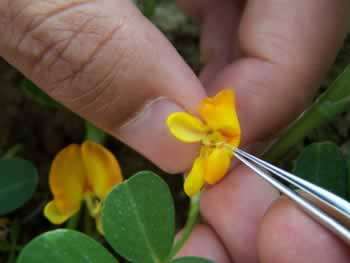Food Studies features the voices of 11 volunteer student bloggers from a variety of different food- and agriculture-related programs at universities around the world. You can explore the full series here.
This summer, my girlfriend and I went backpacking in South East Asia. We visited Thailand, Cambodia, and Laos. On our first bus ride I could already tell this trip was different — one year of plant science different. Among all the stunning sights, I was immediately captivated by the vast rice paddies. We visited during the rainy season and the rice stood green and tall, rising about 50 centimeters (20 inches) out of the flooded fields. It was really quite beautiful, but I was also intrigued by this unfamiliar way of agriculture.
As is the case with most other grains, rice cultivation hasn’t changed much conceptually ever since it first began. The most recent substantial technological advancement in grains came in the 1960s, when the “Green Revolution,” led by agronomist Norman Borlaug, transferred high-yield cultivars, pesticides, and fertilizers to less industrialized countries like India. As I understand it, the implementation of these ... Read more

